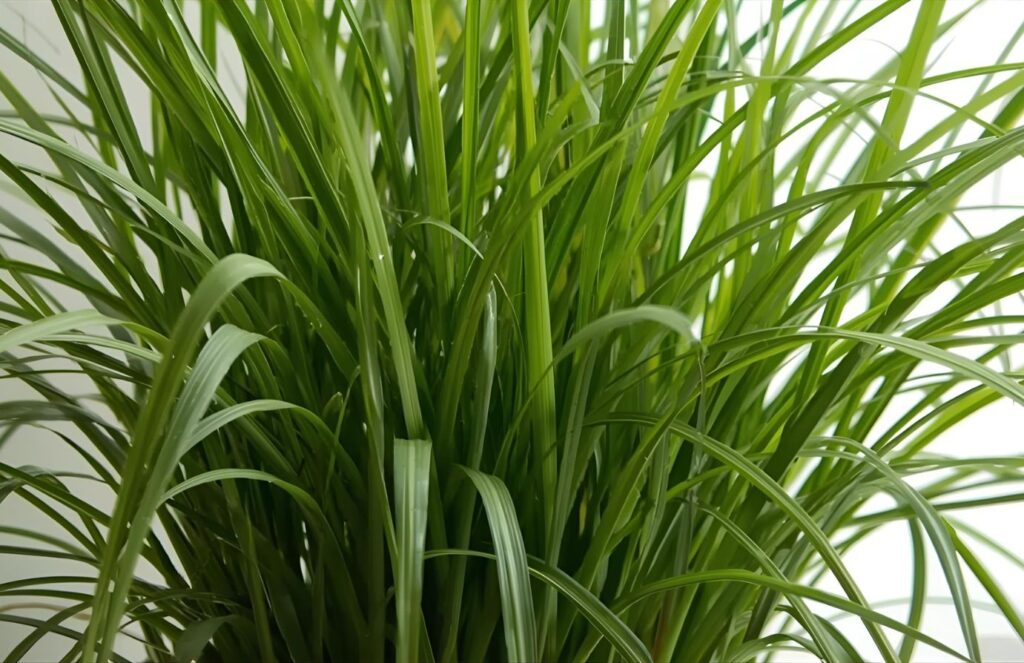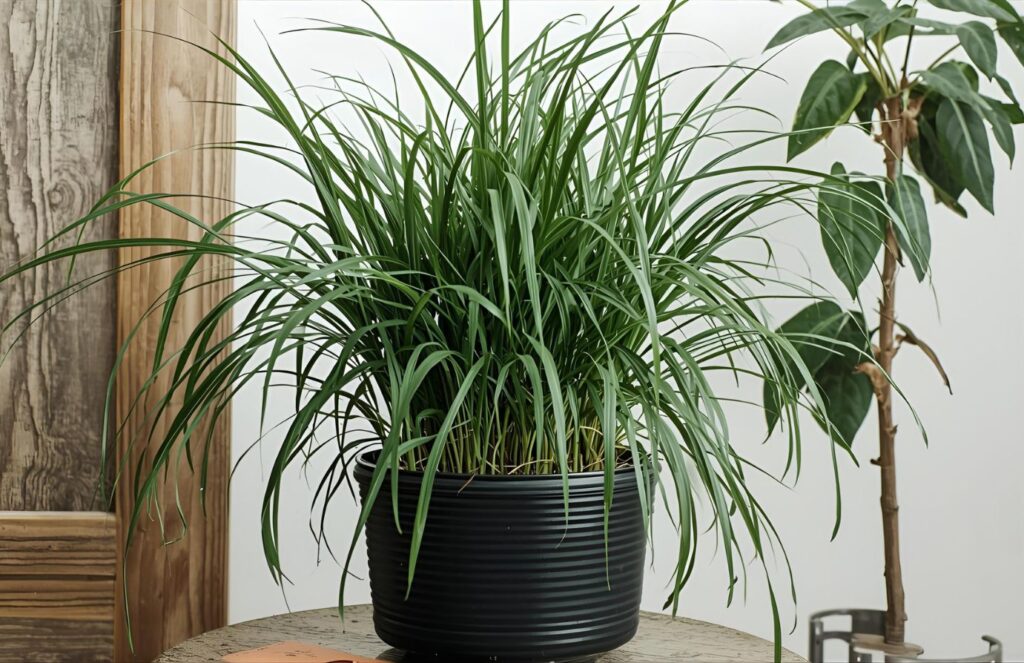If you’re looking to add both beauty and usefulness to your calming garden, the lemon grass plant offers everything you could want in a single, elegant herb. Known scientifically as Cymbopogon citratus, this ornamental and fragrant grass not only fills your space with a refreshing lemony scent but also provides natural benefits that extend from your garden to your kitchen. Its slender green leaves and tall stalks bring a touch of tropical charm, while its essential oils act as a natural insect repellent and a base for perfumes.
Beyond its soothing fragrance, this tender herb serves as a versatile ingredient in cooking. Whether you use it to flavor soups, curries, or Asian dishes, its mild citrusy essence perfectly complements garlic and other spices. Even a fresh stem or crushed root can elevate your culinary creations.
In this guide, you’ll discover how to grow lemon grass from seed or container, care for it under the right conditions, and ensure healthy growth while preventing common diseases. You’ll also learn how this herb benefits your senses, enhances your garden’s texture, and brings lasting calm through its invigorating fragrance.
Understanding Lemon Grass Plants and Their Natural Benefits for Every Garden

The lemon grass plant is more than just an aromatic addition to your garden—it is a symbol of freshness, calm, and natural wellness. Native to tropical regions, this tall grass is celebrated for its graceful appearance and the invigorating scent that fills the air wherever it grows. When you plant it in your yard or bring it home from a trusted nursery, you introduce a source of balance that supports both visual appeal and practical use. The lemon grass plant thrives in warm climates, producing long, slender leaves that sway gently in the breeze and release a soothing lemony fragrance whenever touched.
One of the greatest rewards of cultivating lemongrass plants is their wide range of natural advantages. Their leaves and stalks contain essential oils rich in citral, a compound known for its calming scent and antibacterial properties. Because of this, lemon grass plant extracts are frequently used in herbal remedies, aromatherapy, and natural cleaning products. Beyond their wellness value, lemongrass may also serve as a delightful flavor enhancer. The plant is widely used in cooking across traditional cuisine, where its citrusy tone complements savory dishes, marinades, and teas.
Incorporating lemon grass into your garden means nurturing more than greenery—it means adding vitality and purpose. Whether you wish to elevate the aesthetic of your space, promote a serene atmosphere, or enjoy the benefits of its natural oils, this plant brings harmony to every garden it graces.
How to Plant and Care for Lemon grass in Your Garden or Yard

Choosing the Right Location and Conditions
To successfully grow lemon grass in your garden or yard, it’s essential to understand its preferences. As a tender plant, it thrives in warm, sunny spots with well-drained soil. You can plant it directly in the ground or grow it in pots placed on your patio, allowing you to move it easily if the weather changes. This adaptable grass fits beautifully into an herb garden or any natural setting, adding both height and charm. Because it’s a tall and elegant grass, it can serve as a visual accent while releasing a refreshing lemony fragrance that brings calmness to your outdoor space.
Planting for Strong Growth
When planting, start with healthy stalks or seedlings and space them well to encourage air circulation. Lemongrass may grow rapidly under the right conditions, reaching up to four feet in height. Water regularly, but avoid overwatering, as too much moisture can lead to root rot. Applying organic compost helps the plant develop sturdy roots and lush green blades that capture sunlight beautifully.
Caring for Longevity and Use
To maintain consistent growth, trim dead leaves and harvest mature stalks by cutting them near the base. The stalks are packed with citral, the compound that gives lemon grass its distinct aroma and healing properties. Regular pruning not only promotes fresh shoots but also enhances the overall vitality of the plant. During colder months, you can move pots indoors to protect them from frost and continue enjoying their refreshing scent.
Culinary and Cultural Importance
Beyond its beauty, lemon grass is widely used in cooking, especially in traditional cuisine across Asia. Its subtle citrus flavor transforms any dish—from soups to teas—adding depth and aroma. Combine it with herbs like basil or spices such as cinnamon to create a comforting dish that delights the senses. Whether you grow it for its fragrance, health benefits, or culinary value, lemon grass remains one of nature’s most rewarding plants for your home and garden.
Harvesting Lemon grass for Tea: Expert Nursery Tips and Lasting Plant Benefits

- Harvesting lemongrass for tea offers both flavor and wellness benefits, making it a rewarding experience for every home gardener.
- The plant is believed to originate from a tropical region, known for its warmth and humidity that promote rich aroma and strong growth.
- Mature stalks should be cut close to the base when the plant reaches three to four feet in height for the best quality harvest.
- Freshly gathered stalks can be used right away or dried for storage, ensuring a steady supply of tea ingredients.
- When steeped in hot water, lemongrass releases a citrusy fragrance and taste that helps calm the mind and refresh the senses.
- Expert nursery growers recommend blending lemongrass tea with turmeric root for added detoxifying and anti-inflammatory benefits.
- The citrusy oils in the stalks not only enhance flavor but also promote relaxation and natural energy.
- Beyond tea preparation, lemon grass adds long-term value to your garden by repelling insects and maintaining a clean, refreshing scent.
- With proper harvesting and care, your lemongrass plants will continue to thrive, providing lasting health benefits and natural beauty.
Conclusion
Caring for and growing the lemon grass plant brings you closer to nature while adding beauty, wellness, and flavor to your daily life. From its soothing lemony fragrance and graceful tall form to its valuable essential oils, every part of this herb offers purpose and calm. Whether planted in your yard, placed on a patio, or nurtured indoor plant, lemongrass thrives under simple, consistent care. Its citrusy scent refreshes your senses, while its versatility enhances every dish and cup of tea.
As you’ve learned, cultivating lemongrass connects you with the natural rhythm of growth and balance. By following the expert nursery tips, maintaining the right conditions, and harvesting thoughtfully, you ensure lasting beauty and practical benefits in your home garden.
Start your journey toward a more peaceful and aromatic living space today—plant your own lemon grass plant and experience the timeless joy of this tropical treasure that continues to enrich every garden and kitchen it touches.
Frequently Asked Questions (How to Grow and Care for Lemon Grass Plant for a Calming Garden)
Does lemongrass like full sun or shade?
Lemongrass loves full sun and thrives best when it receives at least six to eight hours of direct sunlight each day. It prefers warm, bright conditions that help it grow tall and healthy. In shady areas, lemongrass becomes weak, with thin leaves and slower growth.
What is the best way to grow lemongrass?
The best way to grow lemongrass is in rich, well-draining soil with plenty of sunlight, ideally 6–8 hours daily. Keep the soil consistently moist, but not waterlogged. Plant stalks with roots in warm conditions, provide regular feeding, and trim leaves to encourage fresh growth and strong flavor.
What are common problems with lemongrass?
Common problems with lemongrass include yellowing or browning leaves due to overwatering or poor drainage, stunted growth from nutrient deficiency, and pest infestations like spider mites or aphids. Fungal diseases can occur in humid conditions, and insufficient sunlight may make the plant weak and leggy.
Do you water lemongrass every day?
No, lemongrass should not be watered every day. It prefers consistently moist soil but can tolerate short dry periods. Water deeply when the top inch of soil feels dry, ensuring good drainage to prevent root rot. Overwatering can harm the plant’s growth and health.
